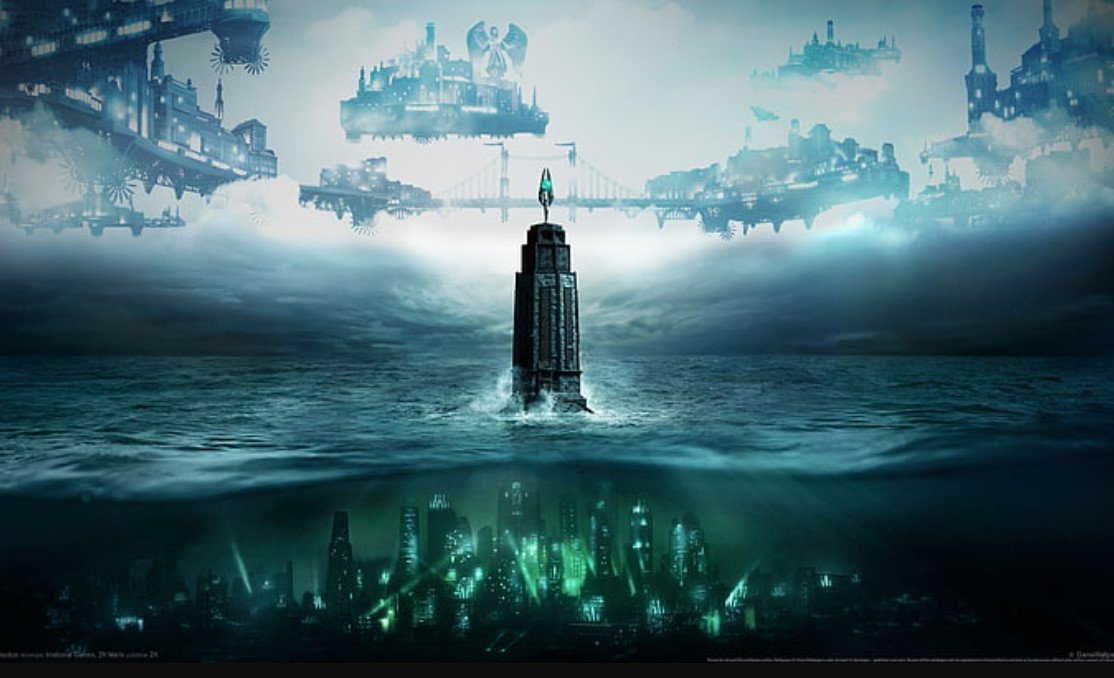The first words you see upon entering Rapture—“All good things of this Earth flow into the city”—are as unforgettable as the experience that follows. Nearly two decades after BioShock’s release, the underwater city remains one of the most haunting, immersive, and thought-provoking settings in video game history.
For many, it was the game that changed how they viewed the medium. It wasn’t just about shooting enemies or solving puzzles. BioShock told a story, asked questions, and forced players to confront ideas that stretched far beyond the screen.
The Descent into Something More Than a Game
Before you ever set foot in Rapture, BioShock drags you through fire and chaos. A plane crash. Wreckage engulfed in flames. The cold vastness of the ocean threatening to pull you under.
Then, a single beacon in the darkness—a lighthouse. The only place to go. Inside, the first real introduction to Andrew Ryan’s philosophy stares you down in the form of a golden statue. No Gods or Kings. Only Men.
From the moment you descend into the bathysphere, BioShock does something that few games manage. It doesn’t just tell a story—it makes you feel it. As the city slowly reveals itself beneath the waves, Andrew Ryan’s voice fills the screen:
“I am Andrew Ryan, and I’m here to ask you a question…”
His monologue isn’t just background noise. It’s a challenge. A provocation. A statement of intent.
When the screen lifts and the neon glow of Rapture spreads out before you, it’s not just an introduction to a new location. It’s a declaration that BioShock is more than a game.

Why Rapture Still Holds Power Over Players
It’s been nearly 20 years, yet the echoes of Rapture remain. The game’s impact isn’t just about its striking visuals or gripping story—it’s about how it made players think.
BioShock’s themes of free will, objectivism, and the consequences of unchecked ambition are woven seamlessly into its world. Every crumbling building, every rusted-out sign, every piece of dialogue tells a story.
- The Splicers, once brilliant citizens, now twisted addicts searching for their next fix of ADAM.
- The Big Daddies, lumbering protectors locked in a cycle of violence they didn’t choose.
- The Little Sisters, eerie yet innocent, both victims and symbols of Rapture’s corruption.
Unlike many games, where the story is something you passively consume, BioShock forces you to confront it.
A New Appreciation for Video Games
For those who grew up playing BioShock, it was a moment of realization—games weren’t just entertainment. They were art.
Before BioShock, games were about fun, action, competition. But Rapture wasn’t just a backdrop. It was a character in its own right. It made players stop, listen, and question.
It wasn’t about winning or losing. It was about experiencing something.
And for many, it was the first time a game truly left a mark.
Returning to Rapture—And Feeling Different
Years after BioShock, BioShock Infinite brought players back to Rapture. A single moment—stepping through a tear into the city, with Bobby Darin’s Beyond the Sea playing softly in the background—was enough to send chills down the spine of longtime fans.
Everything was the same. Yet nothing was.
Rapture, frozen in time, still carried the same eerie beauty. But the player had changed. Now older, now understanding more of the game’s deeper meanings, the return was more than nostalgia. It was a reminder of how much BioShock had shaped their view of storytelling in games.
Not many games could do that.
































